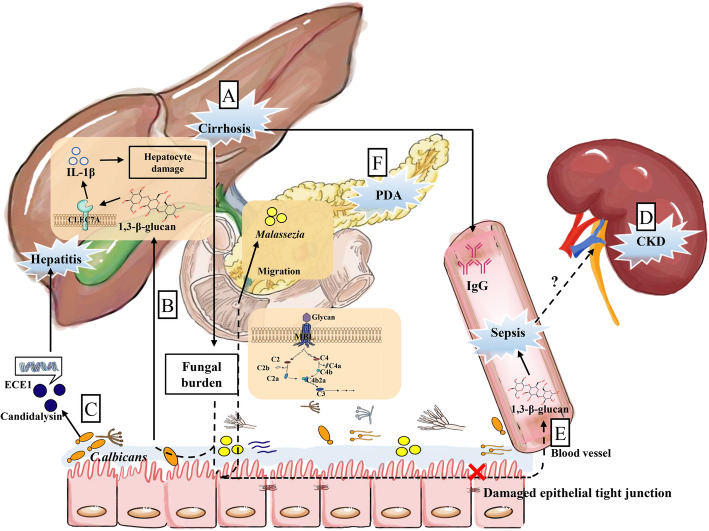Fig. 4.
Potential mechanism of gut mycrobiota in gut-liver axis, pancreatic diseases, and gut-kidney axis. (a) Patients with liver cirrhosis have a high gut fungal burden and high serum IgG. (b) The increased gut fungal burden comes with translocation of 1,3-β-D-glucan (BG). Then, BG is recognized by C-type lectin-like receptor CLEC7A to induce IL-1β production, aggravating hepatocyte damage. (c) Intestinal colonized C. albicans secrete candidalysin encoded by ECE1 gene, which is involved in exacerbation of the disease in patients with alcoholic hepatitis. (d) Mice with CKD show the change in gut microbiota and damaged epithelial tight junctions, leading to leakage of bacterial or fungal products. (e) Gut leakage may promote migration of BG in the serum to aggravate sepsis. (f) PDA tumor is highly enriched with Malassezia spp. in the pancreas, which results from the migration of gut fungi through the direct link between these two organs via the sphincter of Oddi. Besides, glycan of fungal cells wall-MBL-complement cascade pathway plays an important role in PDA. ECE1, extent of cell elongation 1; BG, 1,3-β-D-glucan; CKD, chronic kidney diseases; PDA, pancreatic ductal adenocarcinoma. Arrows represent activation and horizontal lines represent suppression

